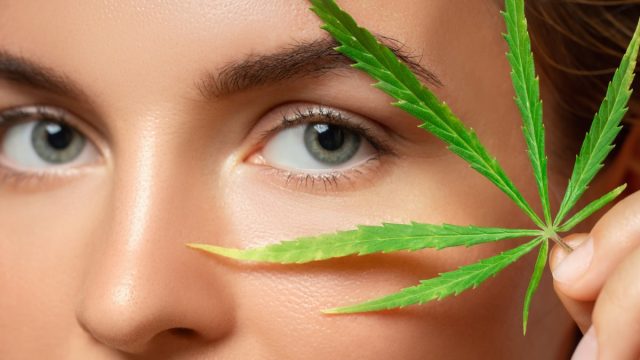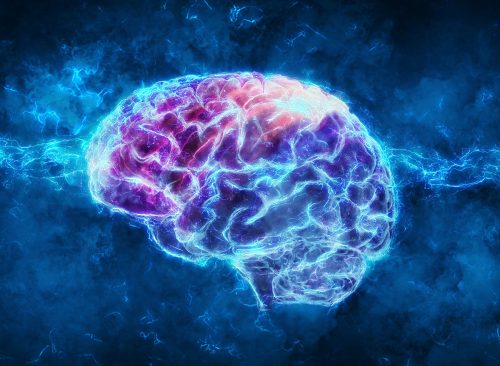7 Surprising Side Effects of Marijuana, According to Neuroscience Professor
It depends on the variety you're using.

Marijuana has a pretty simple reputation, created from decades of depiction in pop culture. That’s largely because cannabis wasn’t studied too closely until recent years, when scientists found out a few things—such as, pot isn’t the evil demonic force of Reefer Madness lore; it can affect people quite differently; and there’s still a lot to learn about it. As recreational marijuana becomes more legal nationwide, experts say it’s important to learn about how using cannabis might affect you. Sometimes, it can be in ways you wouldn’t expect, and it depends on the variety you’re using. Dr. Andrew Huberman, a professor of neurobiology and ophthalmology at Stanford, recently revealed some of the surprising side effects of using marijuana on his podcast, based on scientific studies of the brain on cannabis.

“There are very strong data pointing to the fact that for people who are chronic users of cannabis—that is, using it twice a week or more—over time their levels of anxiety actually increase,” said Huberman. “Over the course of 12 or more months, there is a well-documented effect of the anxiety relief that cannabis and THC initially brought, being less and less potent.” The result: People need to smoke or ingest more cannabis to get the same level of anxiety relief. “And in some cases, there’s a switch from anxiety relief to increase in anxiety,” he adds.

Different types of cannabis tend to have different effects. Although the stereotype of the stoner is someone who’s so chill they’re less verbal, “People who take sativa varieties tend to talk a lot more than they would otherwise,” says Huberman. “There are exceptions, but there are also general rules: The sativas tend to meet people sort of mood-elevated and energetic … and indica varieties tend to do the opposite,” having a more sedative, relaxant effect.

“Some people become very stressed and very paranoid when they smoke sativa varieties or other varieties of cannabis,” says Huberman. “Depending on preexisting neural circuitry and propensity for anxiety, some people ingest or smoke sativa varieties will experience intense anxiety and paranoia.” There’s no way to predict who will experience this effect. One thing you don’t want to do, Huberman says, is follow “dorm room lore” and consume more cannabis if you find it makes you paranoid. “If someone experiences paranoia or anxiety from a given strain of the marijuana plant or from ingesting an edible in a particular way or a particular kind of edible, that person is very likely to experience the same effect every time they ingest that strain or variety,” he adds.

Although cannabis doesn’t have a great reputation as a productivity agent, some people do achieve a greater sense of focus or creativity when they consume it. The active ingredient in cannabis, THC, binds to receptors in the brain and throughout the body known as CB-1. Depending on where those receptors are located in the brain, they’re either activating systems that increase alertness and focus, or they’re causing suppression of those circuitries, explains Huberman. “So we have kind of a seesaw effect here, where the same compound is increasing mood and alertness and focus in the prefrontal cortex and is decreasing stress and threat detection in the amygdala,” he says. “And that’s one of the reasons why especially the sativa varieties of cannabis allow people to enter these states of focus.”

Indica varieties of cannabis tend to turn off thinking, planning, and threat detection centers in the brain, Huberman says. “It also tends to shut down the hippocampus, an area of the brain associated with memory, which is why indica varieties lead to profound defects in short-term memory and sometimes in long-term memory as well, if it’s consumed over long periods of time.”

There are a high number of CB-1 receptors in the spinal cord. That largely explains how THC and CBD seem to provide pain relief, says Huberman. However, “a lot of people perceive or believe that they experience more pain relief from cannabis than they actually do,” he adds. “It actually has a lot to do with a perceptual shift to basically focusing on other things.”

“Even if you didn’t understand anything that I’ve said about the biology of these different strains and the receptors, please do understand that there is no way to predict what the effect of a given strain will be on an individual,” says Huberman. That’s partly because the amount of THC in cannabis varies so widely—it’s hard to tell how much THC exists in a joint you might encounter. That may change, Huberman says, as the cannabis industry becomes more commercialized and perhaps standardized. But it’s not there yet.














